Arctic Sledge
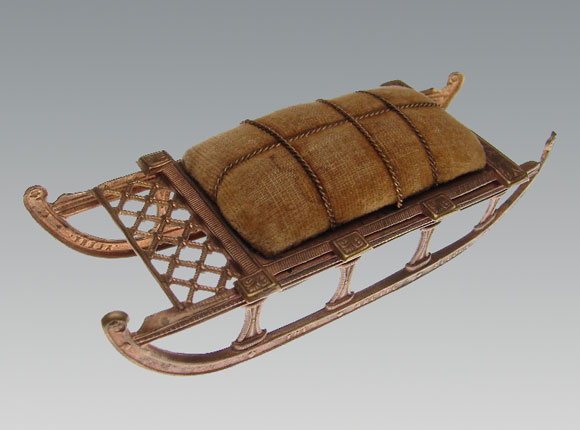
Needle Case (photographs courtesy of Bunny's Place)
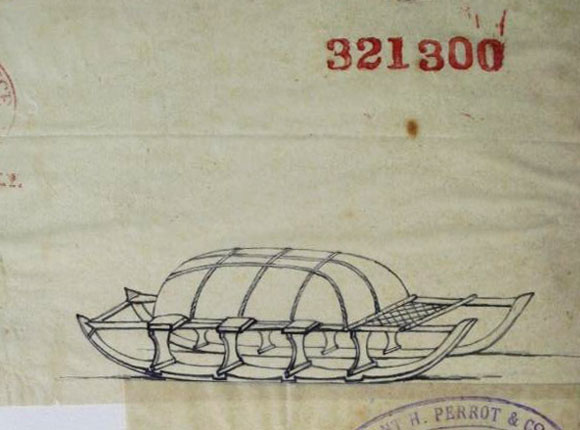
Design Representation
Design Details
Needle Case Type: |
Figural |
Patent/Registered to: |
W. Avery & Son - Redditch |
Patent/Design Representation #: |
Ornamental Class 1 – Metal: #321300 (Provisional Design #1363 registered May 12, 1877) |
Patent/Design Registration Date: |
May 11, 1878 |
Location of Patent/Design Registration: |
The National Archives (TNA) - Kew, UK |
Reference #: |
TNA Representation - BT 43/43/321300
TNA Register - BT 44/4/321300 |
Dimensions: |
4 x 1 3/8 x 1 1/4 (these dimensions are in inches rather than centimeters) |
Material: |
Brass |
Name Variations: |
W. Avery & Son - Redditch |
Other Variations: |
None |
Additional Photographs
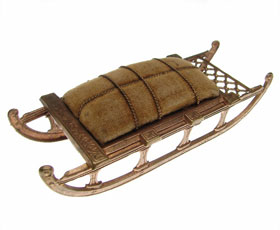
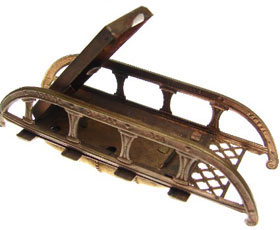
Top back and bottom views

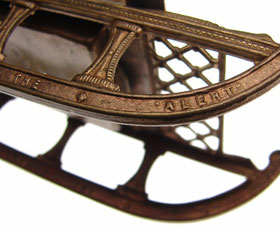
Sides with name
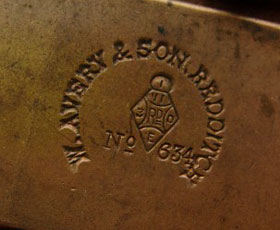
Bottom signature detail
Facts
The sledge is a land vehicle which is drawn on two narrow runners usually over snow or ice to carry freight or cargo. They may be
hauled by animals or as was the case in early expeditions to the Arctic by teams of men. The British Arctic Expedition of 1875/6
departed Portsmouth on 29th May. Their mission, planned to take two years, was to reach the North Pole and to determine whether there
was an open polar sea. The expedition was led by Sir George Nares and consisted of 120 men in two ships, the HMS Alert and the HMS
Discovery.
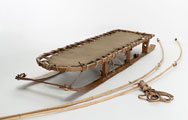
History
The expedition departed to scenes of great excitement and celebration, buoyed by wishes for success and congratulations on their bravery
in a telegram from Queen Victoria. No open polar ocean was found and when sea ice packed in around the ships they prepared for sledging
trips across the ice in the coming summer. In April seven sledges and 53 men set out. Two sledges carrying boats and three with
other equipment and stores went north towards the pole, and two to explore the coastline of Ellesmere Island. The going was very hard
with the load per man over 100 kilograms, deep snow drifts and difficult terrain. Within weeks the men were suffering from the combined
effects of unsuitable clothing, inadequate tents and the majority the physical symptoms of scurvy. Rescue parties successfully relieved
the few well men attempting to support the sick and returned them to the ships. The expedition was abandoned and the ships returned to
Portsmouth in November 1876.
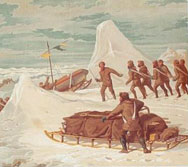
Miscellaneous
The incidence of scurvy was so high that of the 53 crew of the Alert, only nine were fit for service. On his return Nares faced some
criticism not because of the failure to reach the pole but because the men had succumbed to scurvy when it was already known that lemon or
lime juice was a preventative measure. Citrus juice was carried by the sledge parties but in a concentrated form obtained by concentrating
it in copper kettles. It was unknown at that time that copper leaches the vitamin C and that heat destroys it.
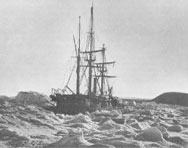
Note: Right side panel text and photos provided by Lynda Herrod.














